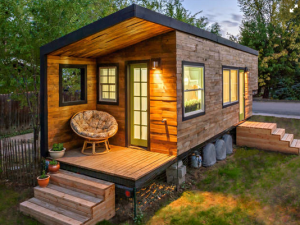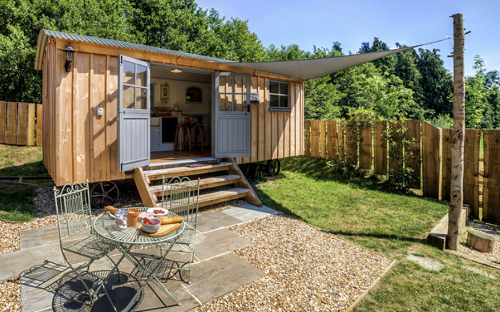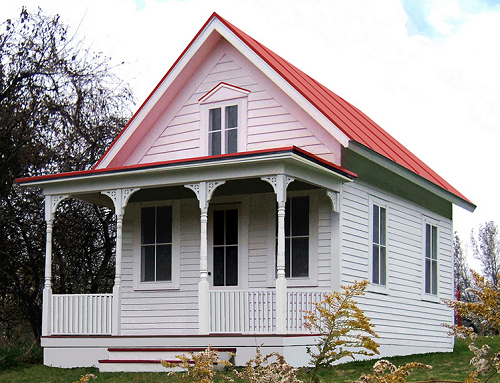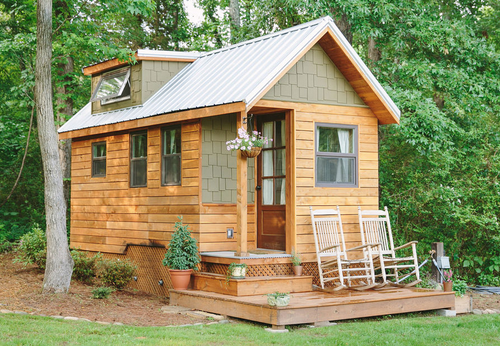This post may contain affiliate links. Please read our disclosure for more information.
A large number of Americans on the cusp of retirement, those aged 55 to 64, are in trouble. According to a recent Bloomberg editorial, the median household retirement savings for people in this age group is a meager $14,500.
Fourteen thousand, five hundred dollars is a scary number. It effectively means that half the households in the 55 to 64 age group haven’t saved squat for retirement.
Some in the near-retirement, no-savings crowd will be fine. They have pensions, or paid-off homes, or family willing and able to take them in.
But what about the near-retirement, no-savings crowd who lack a DIY safety net? What about those whose only source of income other than work will be Social Security, which for the typical beneficiary is a little more than $1,300 a month?
Making Social Security Go Further
For those reaching retirement age without savings and a DIY safety net, things won’t be easy. Social Security is a woeful stipend. The United States isn’t designed for those obliged to live on $1,300 a month.
One solution to this predicament is a more generous Social Security benefit. But how likely is that given our current fiscal situation? Government is deeply in debt. Many, if not most, working Americans have lost faith in government and are loathe to give it more money. Any dramatic increase in the typical Social Security benefit will therefore have to come at the expense of other large programs or subsidies. And will the lobbyists for Medicare, national defense, higher education, housing subsidies, or any other powerful faction allow this to happen?
The bottom line is this: a game-changing increase in the typical Social Security benefit isn’t going to happen. If anything, given the declining ratio between workers and retirees, and given the declining competitiveness of American workers in our global economy, the typical Social Security benefit is going down. Those who will be dependent on Social Security alone need to wake up. Neither the Democrats nor the Republicans are going to save them. They will have to save themselves.
Here, then, are three suggestions to stretch the purchasing power of the typical Social Security benefit.
Geoarbitrage
It’s no secret that the cost of living in the United States isn’t uniform. It costs far more to live in San Francisco than Tupelo, Mississippi, for instance. If you want to get more for your Social Security buck, move to a state or city with a lower cost of living. If you want to get even more for your Social Security buck, move out of the United States. In Costa Rica, for instance, you can have a nice, middle-class life for roughly $1,200 a month.
Partnership
Two can live as cheaply as one. Marry or team up with someone who is also collecting a Social Security benefit. Doing so will effectively double your household income.
Work
Working 15 hours a week at $10 an hour will provide an annual income of $7,500. That’s roughly equivalent to half the average annual Social Security benefit ($1,300 x 12 = $15,600).
Few cherish the thought of working in old age. But if you’re capable of working in old age, and you need to stretch your Social Security benefit, working, even part time, can mean the difference between constant struggle and mild comfort. Just be aware that earning too much will reduce your Social Security benefit. If you’re 66 or older and receiving Social Security, you can currently earn up to $15,720 a year without jeopardizing your benefit. For every two dollars you make above $15,720, however, your annual Social Security benefit will be reduced by a buck.
Tiny Houses to the Rescue
I wrote earlier that the United States isn’t designed for those obliged to live on $1,300 a month. But what if we could change this? What if we could lower the cost of housing so much that $1,300 a month becomes a livable stipend?
Enter the tiny house movement.
Tiny houses are generally less than 300 square feet and usually built on trailers. The pictures below show the kind of dwellings tiny house enthusiasts are creating. Now, perhaps my aesthetics are all screwed up, but I find these houses pretty impressive. I’d much rather live in any one of these than in an RV or a trailer. But aesthetics aside, the real beauty of a tiny house is this: it’s very economical to build and maintain. Here, for example, is a tiny house that cost about $10,000 to build.
If you have an entrepreneurial spirit, and you want to do something about the looming retirement crisis, you should seriously consider the tiny house movement. The government is powerless to make $1,300 a month a livable stipend. But you’re not. Build a tiny house, providing you have the money and the land, and rent it to a retired person whose sole means of support is Social Security. Are you going to make a killing? No. But that’s not the point. The point is to extend a lifeline to someone in need. Let’s look at the numbers from an entrepreneur’s perspective.
Tiny House Numbers
- Size: 250-300 square feet
- Cost to build: $12,000 – $15,000
Monthly Expenses (based on 1/6 the expenses of my current 2000 square foot house)
- Electric: $20
- Heat: $10
- Water: $7.50
- Maintenance: $10
- Taxes: $0 – $30 ($0 if the house is built on a trailer; up to $30 if built on a permanent foundation)
- Total Monthly Expenses: $50 – $80
Revenue Numbers
- Rent (Utilities Included): $400 per month
- Profit: $320 – $350 per month
- Years to Recoup Investment: 3 – 4
Now let’s look at the numbers from a renter’s perspective, someone we’ll assume to be retired and solely dependent on Social Security.
Fixed Monthly Expenses
- Rent and Utilities: $400 (roughly 30% of the typical Social Security benefit)
- Cable TV and Internet: $120
- Cell Phone: $45
- Total Fixed Monthly Expenses: $565
Variable Monthly Expenses
- Food: $200
- Car: $200
- Toiletries: $20
- Laundry: $20
- Cleaning Supplies: $15
- Clothing: $15
- Total Variable Monthly Expenses: $470
Monthly Cushion (Social Security benefit minus expenses): $265
Final Thoughts
Our hypothetical retiree doesn’t have much room for error. A major car repair or a medical emergency will easily overwhelm his or her monthly cushion. The point of this exercise, however, is to show that a tiny house could go a long way towards making $1,300 a month a livable stipend. And remember, this exercise assumed a worse-case scenario. Our hypothetical retiree couldn’t work. But if our hypothetical retiree were capable of work, and worked a mere ten hours a week at minimum wage, he or she would more than double his or her monthly cushion.
So there are your marching orders, groovy freakin freedomists. Hundreds of thousands of current and future retirees need your help. May a million tiny houses bloom.





Gosh, it is scary how little people have saved. You listed some good options for people who are close to being in dire situations. Hopefully people who have 10-20 years left until they retire will start to save more for retirement. We live in a small house, but 300 sq feet def would not be enough.
Hey, Dave. Same here. When Mrs. Groovy and I got married, we lived in a 600 sf apartment. That was too close for comfort. We currently live in a 2,000 sf house. We plan on downsizing to a house in the 1,200 – 1,400 sf range. A tiny house would be too small. We should be able to handle a small house. Thanks for stopping by, my friend. Cheers.
I’m a big fan of tiny homes. They’re actually amazing little pieces of architecture.
Designed right, they could be a great option for retirees. If there’s not a crazy loft space to crawl into, like a lot have, and things like that, it can be a great option for a retirees who want to stay in their own home deep into retirement and maintain their independence.
Great article!
Amen, brother! The more I see tiny home clips on YouTube, the more I marvel at their efficiency. Like you so aptly pointed out, they are “amazing little pieces of architecture.” My only hope is that their appeal grows. Tiny homes really could benefit a lot of retirees. Thanks for stopping by, Adam. I really appreciate your kind words and insights.